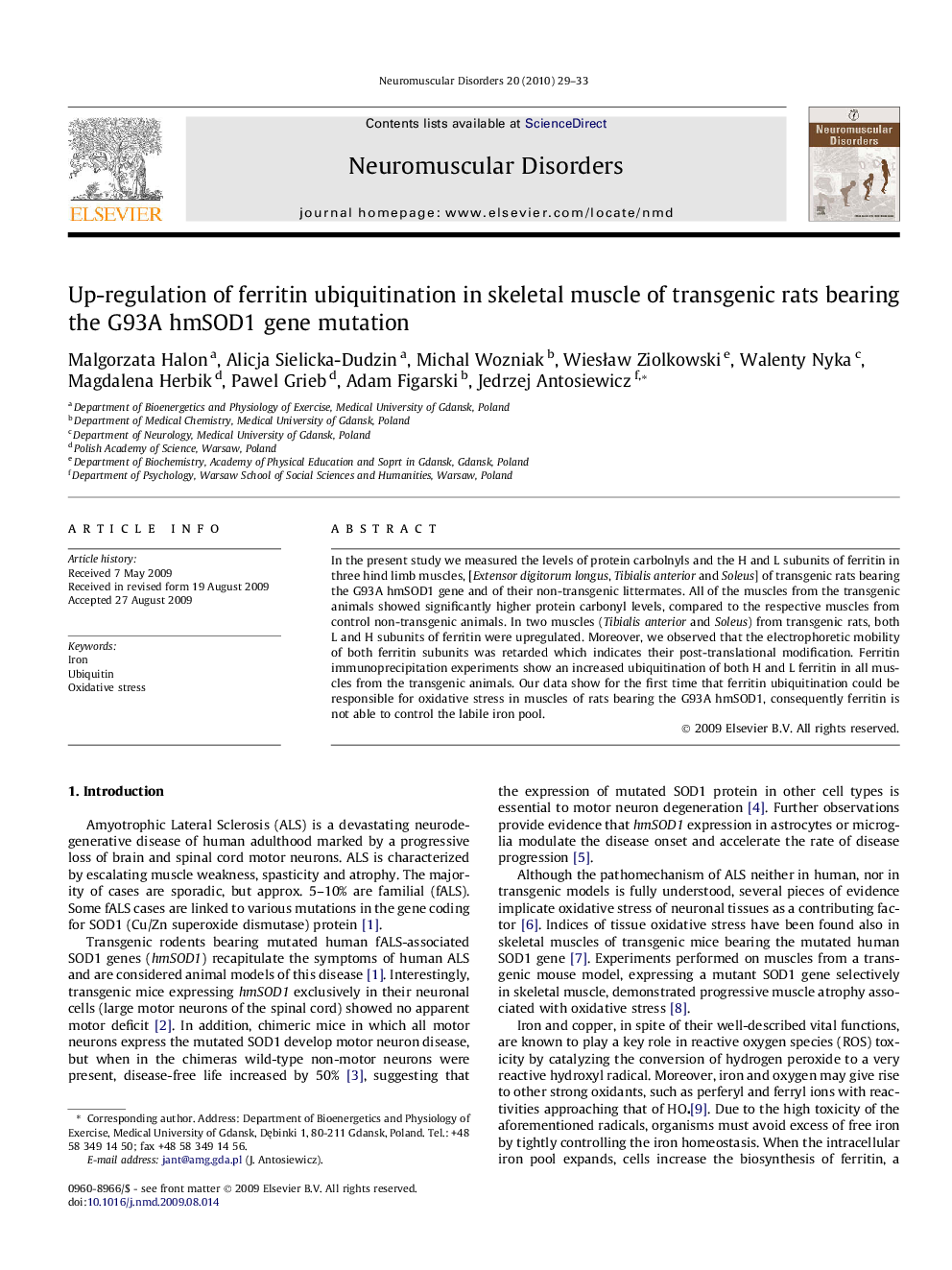| Article ID | Journal | Published Year | Pages | File Type |
|---|---|---|---|---|
| 3080609 | Neuromuscular Disorders | 2010 | 5 Pages |
Abstract
In the present study we measured the levels of protein carbolnyls and the H and L subunits of ferritin in three hind limb muscles, [Extensor digitorum longus, Tibialis anterior and Soleus] of transgenic rats bearing the G93A hmSOD1 gene and of their non-transgenic littermates. All of the muscles from the transgenic animals showed significantly higher protein carbonyl levels, compared to the respective muscles from control non-transgenic animals. In two muscles (Tibialis anterior and Soleus) from transgenic rats, both L and H subunits of ferritin were upregulated. Moreover, we observed that the electrophoretic mobility of both ferritin subunits was retarded which indicates their post-translational modification. Ferritin immunoprecipitation experiments show an increased ubiquitination of both H and L ferritin in all muscles from the transgenic animals. Our data show for the first time that ferritin ubiquitination could be responsible for oxidative stress in muscles of rats bearing the G93A hmSOD1, consequently ferritin is not able to control the labile iron pool.
Keywords
Related Topics
Life Sciences
Neuroscience
Developmental Neuroscience
Authors
Malgorzata Halon, Alicja Sielicka-Dudzin, Michal Wozniak, WiesÅaw Ziolkowski, Walenty Nyka, Magdalena Herbik, Pawel Grieb, Adam Figarski, Jedrzej Antosiewicz,
